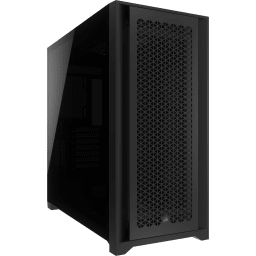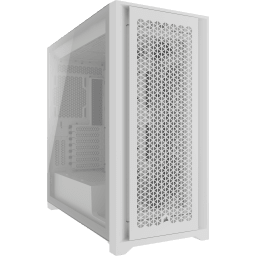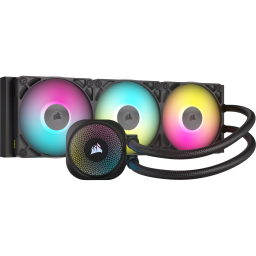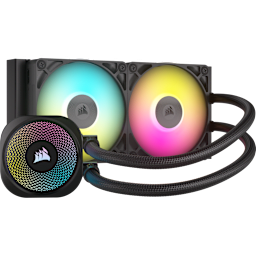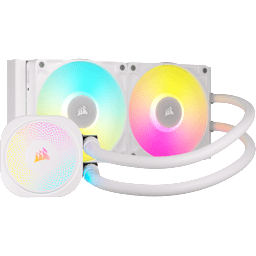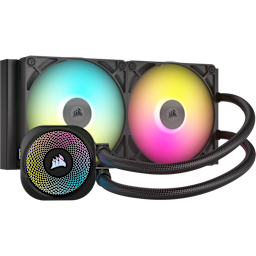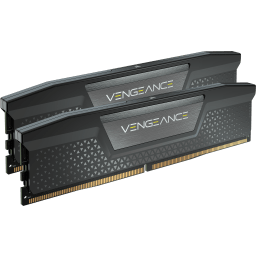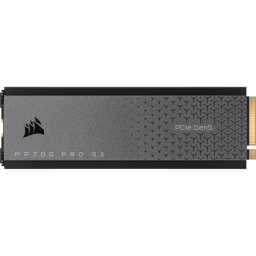Enkelt sagt kan pc-flaskehalse beskrives som en ydelsesbegrænsning forårsaget af en specifik komponent eller et andet aspekt af et system, der forhindrer pc'en i at opnå sit maksimale ydelsespotentiale.
Eller, for at bruge et billede, at forsøge at hælde en hel flaske væske ud gennem den smalle åbning på en flaske - du har en liter vand, du har en kande på størrelse med en liter på den anden side, men flaskehalsen begrænser ydeevnen. Bogstaveligt talt en flaskehals.
Hvordan fungerer flaskehalse?
En pc fungerer meget synkront. Mange ved, at GPU'en (Graphics Processing Unit) primært er ansvarlig for in-game framerates og andre GPU-beregningsopgaver, men CPU'en (Central Processing Unit) skal behandle data hurtigt nok til at "fodre" GPU'en med dem. Generelt gemmes indholdet på din pc på en SSD eller HDD. Disse data overføres derefter gennem systemhukommelsen (RAM) til din CPU og GPU. Takket være PCI Express-bussen er der adgang til disse data og systemhukommelsen ved ekstremt høje hastigheder.

En visuel fremstilling af en GPU, der bliver flaskehalset af en CPU
Men hvis din CPU er for langsom til effektivt at sende data over til GPU'en, kan din GPU være "flaskehalset", hvilket betyder, at den har uudnyttet ydeevne. Den sidder bare og venter på, at den næste CPU-cyklus skal blive færdig. Alle de lækre data, de højopløselige spilteksturer, det utrolige spilindhold, ligger der på lageret eller i systemets RAM, mens CPU'en gør sit bedste for at flytte dem. Det er hjerteskærende.
Alternativt, hvis din CPU er et kraftværk, der bare smider enorme mængder data ud hver cyklus, men GPU'en ikke er hurtig nok til at håndtere dem, vil GPU'en være dit systems flaskehals.

En visuel fremstilling af systemets ydeevne, der er flaskehalset af GPU'en
CPU'en og GPU'en er de to mest omtalte komponenter, men de eksisterer ikke i et vakuum. På moderne systemer kan systemhukommelse og lagerplads også spille en rolle. Hvis du f.eks. stadig bruger et SATA-drev, kan du være begrænset til hastigheder på omkring 500-550 MB/s. Mens en moderne M.2 NVMe SSD med PCIe 5.0-kompatibilitet kan producere sekventielle læsehastigheder på op til 14.000 MB/s. Det er omkring 25 gange hurtigere. Hvis du har en moderne high-end GPU og CPU, skal du ikke begrænse dig selv med langsom lagring.

En af de andre komponenter, der ofte bliver overset, er systemhukommelsen eller RAM. RAM-mængden spiller en stor rolle i forhold til flaskehalse i ydeevnen. Hvis du f.eks. kører moderne spil i høj opløsning, skal du skifte store teksturfiler og enorme mængder data fra lageret til din GPU og CPU.
Hvis du prøver at gøre det med 4 GB eller 8 GB hukommelse, vil du få det svært. Moderne systemer fungerer bedst med mindst 16 GB RAM, og nogle programmer (som videoredigeringsprogrammer) har stor gavn af 32, 64 eller endda 128 GB RAM. Men mængden af RAM er ikke det eneste, du skal tænke på - den samlede båndbredde af din systemhukommelse, hukommelsens frekvens, kan spille en stor rolle.
Vi har fundet ud af, at det på moderne systemer kan forbedre frameraten dramatisk at gå fra DDR5 4800 MHz til DDR5 6000 MHz.

Hvis du vil vide mere om, hvorfor hukommelsen er vigtig, kan du se vores side MEMORY MATTERS.
Hvis din hukommelse er for langsom, eller du ikke har nok af den, kan du blive en flaskehals for resten af dit system.
Så nu, hvor vi har fundet ud af, hvad flaskehalse er - hvad gør vi så ved det? Hvordan kan du se, om dit system har en flaskehals, og hvad gør du, hvis det har?
Er min pc en flaskehals?
Der er flere programmer, du kan bruge til at identificere pc-flaskehalse, men et par af de mere populære muligheder er NVIDIA GeForce Experience eller MSI Afterburner. Med disse værktøjer kan du overvåge din CPU- og GPU-forbrug i realtid under spil og benchmarks.
Systemet, der bruges til denne test, er en Intel Core i9 13900K-processor med en NVIDIA GeForce RTX 4090, 64 GB CORSAIR Dominator Titanium DDR5-6400 og en 2 TB CORSAIR MP700 M.2 NVMe SSD.

Med den seneste NVIDIA-app installeret kan jeg ved at trykke på ALT+Z åbne NVIDIA-menuen, vælge "Statistics" i bunden og derefter klikke på "View All", som viser de statistikker, du kan overlejre på din pc.

Det, du skal vælge her, er GPU- og CPU-udnyttelse, da de vil være de to mest tydelige elementer, der viser, hvor din flaskehals er.
Det giver et overlay, der sidder i hjørnet af skærmen og viser systemets billeder pr. sekund samt GPU- og CPU-udnyttelsesprocenten, sådan her:

Nu skal der køres nogle benchmarks eller spil. Afhængigt af hvad du prøver at gøre med dit system, vil dette ændre sig for dig. Hvis du er bekymret for flaskehalse under CPU-intensivt AI- eller videoredigeringsarbejde, skal du bruge andre værktøjer. Du kan bruge en række pålidelige performance-benchmarks som CineBench, 3Dmark, PCMark 10 eller andre. Nogle spil, som Shadow of the Tomb Raider, har indbyggede benchmarks, der giver pålidelige resultater.
Når du har fundet ud af, hvilken software du vil bruge til din benchmarking eller overvågning af ydeevne, skal du holde øje med GPU- og CPU-%-tallene. Det, du skal holde øje med her, er, hvilken komponent der konsekvent ligger på de højeste tal. Det element, der har den højeste udnyttelsesprocent, er det element, der mest sandsynligt er flaskehalsen for ydeevnen.

I eksemplerne i tabellen ovenfor ville GPU-flaskehalsen konstant have en GPU på over 95 %, mens CPU'en ville være betydeligt lavere, i dette eksempel konsekvent under 70 % udnyttelse. Det ville betyde, at CPU'en sidder og bruger meget lidt af sin kapacitet, mens GPU'en bruger næsten alt, hvad den har. Omvendt, hvis du bytter om på tallene, vil en GPU med en udnyttelse på under 70 % betyde, at den venter på at gøre noget, mens en CPU, der konstant er oppe på 95 % eller derover, vil betyde, at den gør alt, hvad den kan, men stadig ikke kan følge med GPU'en. Bemærk, at disse tal blot er eksempler, og at tallene i den virkelige verden vil se dramatisk anderledes ud.
Okay, jeg har fundet min flaskehals. Og hvad så nu?
Tillykke med det! Du har fundet det stykke hardware, der forhindrer dig i at udnytte din pc's fulde potentiale, når det handler om at køre dit yndlingsspil eller din yndlingssoftware. Næste skridt er at vurdere, hvad du skal gøre. Den nemmeste vej til at forbedre ydeevnen er at reducere indstillingerne. Hvis du f.eks. i et spil oplever, at din GPU er begrænset, kan du prøve at justere de grafiske indstillinger et hak ned eller sænke opløsningen. På nogle kort har driversoftwaren endda en knap til "optimering af indstillinger", som er specifik for hvert spil eller software, der er installeret.

Denne mulighed er gratis og kan hjælpe dig med at optimere den grafiske ydeevne, hvis din GPU er din flaskehals.
Hvis du har CPU-flaskehalse, er der også en række muligheder, du kan undersøge.
- Sørg for, at din CPU ikke overopheder ved at overvåge temperaturen under benchmarks. Hvis du opdager, at din CPU bliver overophedet, skal du følge fejlfindingsmetoderne for din CPU-køler for at sikre, at den er installeret og fungerer korrekt.
- Sørg for, at alle indstillinger for din specifikke CPU er korrekte i dit systems UEFI/BIOS.
- Aktivér XMP (for Intel) eller EXPO (for AMD) for at sikre, at din processor og hukommelse arbejder ved deres nominelle hastigheder, og at overclocking er aktiveret.
Og til sidst er der den dyreste (men sjoveste) mulighed: opgradering. Det bedste ved at være pc-spiller er at vide, at en række elementer i systemet kan opgraderes individuelt. For en stationær pc er mulighederne næsten ubegrænsede. Selv hvis din CPU er et par år gammel, kan du se en massiv forbedring ved at opgradere et grafikkort. Har du brug for at løse varmeproblemet? Hvad med en ny CPU-køler? Overophedning af GPU? Opgrader dit kabinet til en model med høj luftgennemstrømning og bedre blæsere til at holde den kølig. Vores webbutik har mange muligheder, når det gælder pc-opgraderinger, så tag et kig!
Det er vigtigt at indse, at alle systemer har en eller anden form for flaskehals for et givet program. Om den flaskehals påvirker din glæde ved din pc, er op til dig. Forskellen mellem 30 FPS og 60 FPS er stor, men mellem f.eks. 150 FPS og 180 FPS? Det er op til dig.
PRODUKT REGISTRERING
